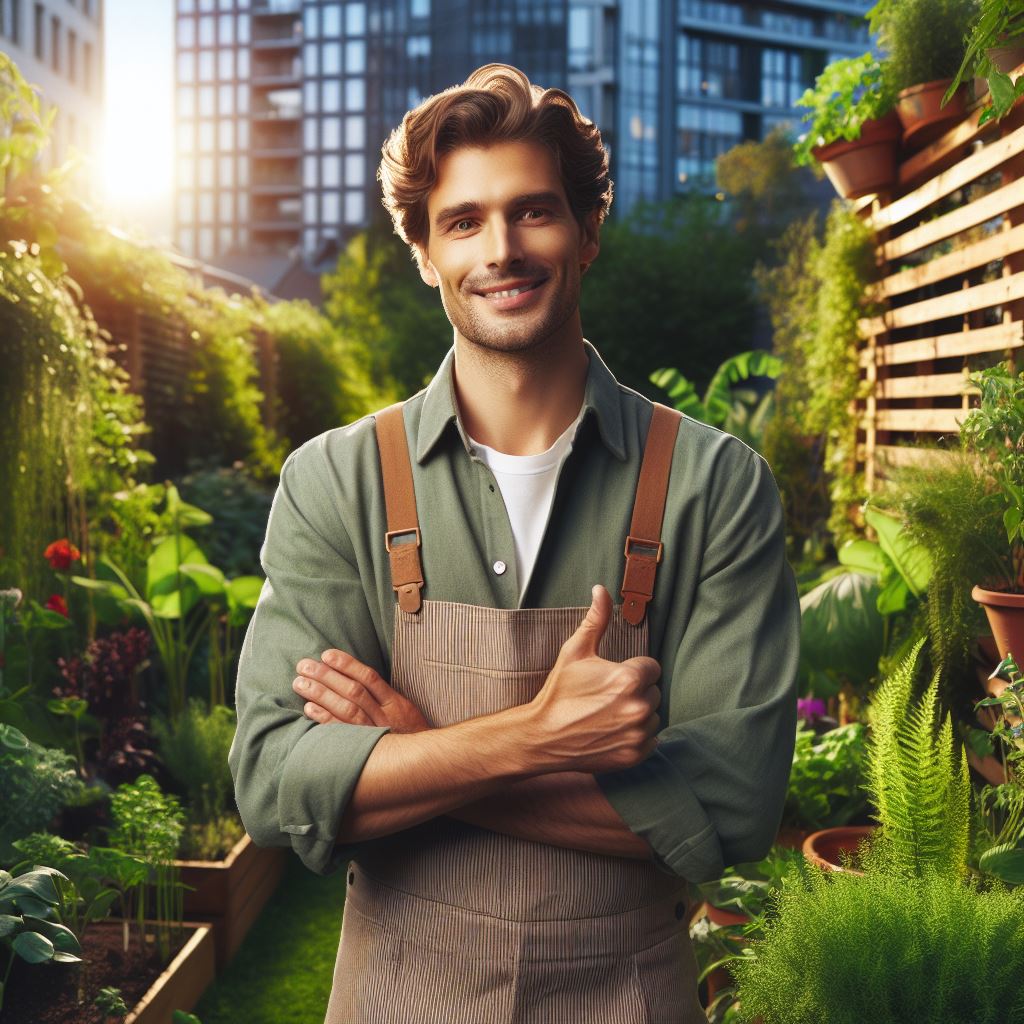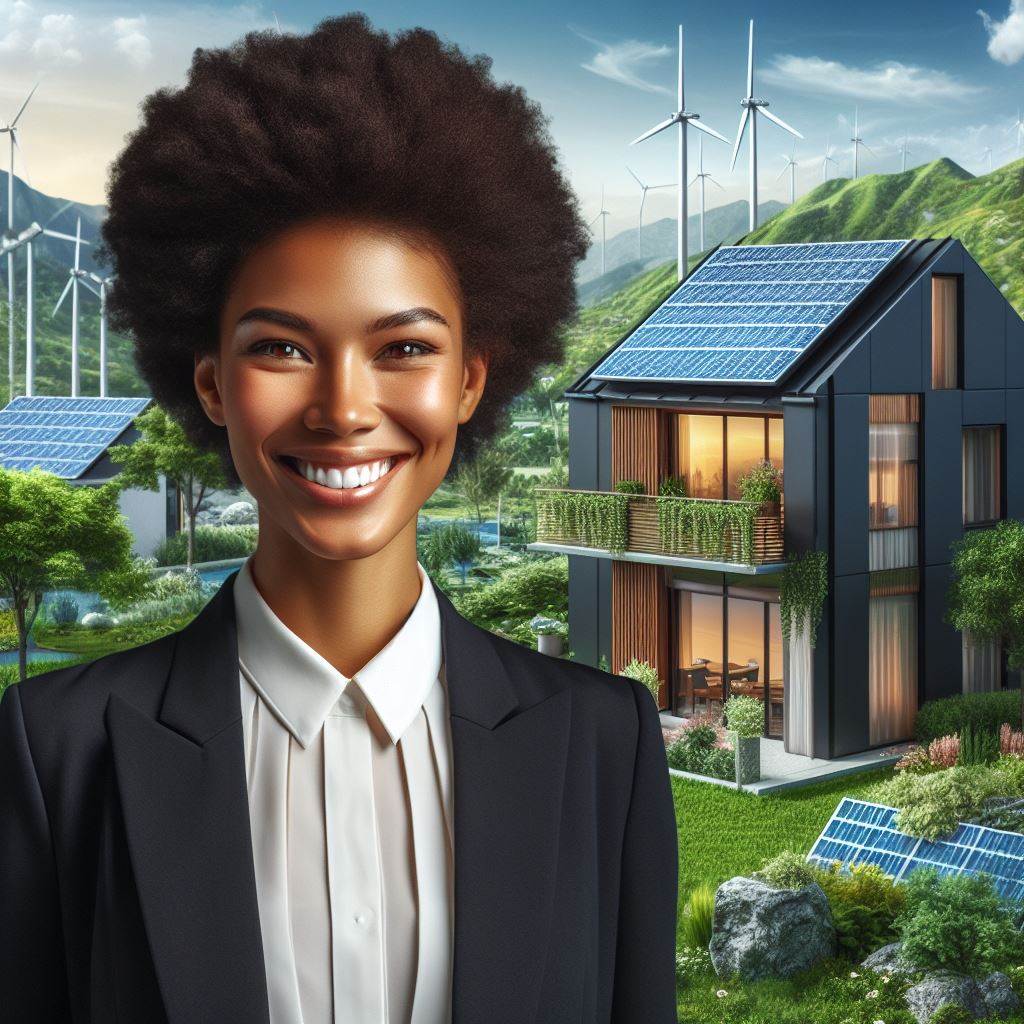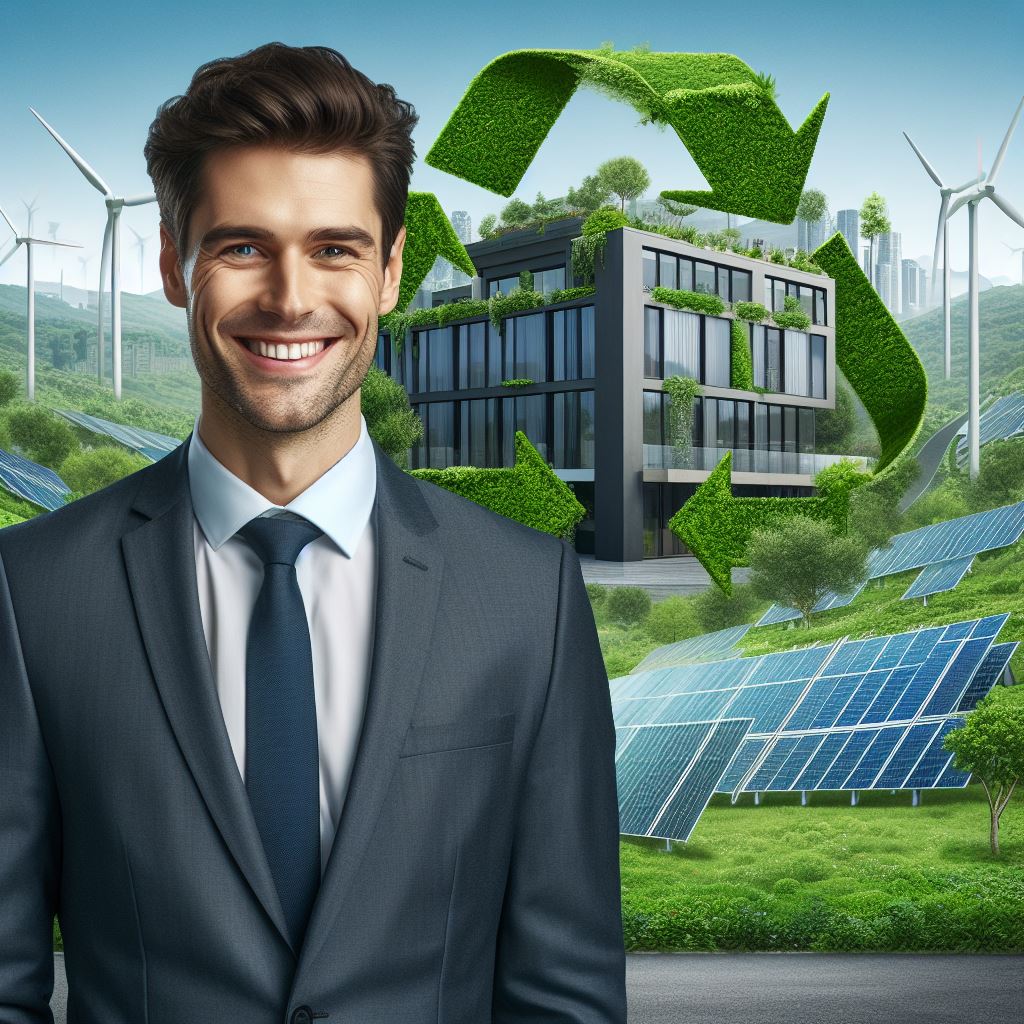Introduction
Green spaces are open areas consisting of grass, trees, or other vegetation.
They play a crucial role in urban areas by providing numerous benefits to the environment and people.
Green spaces refer to open areas within urban landscapes that are covered with plants, including parks, gardens, and forests
Green spaces in urban areas are essential for various reasons.
Firstly, they improve air quality by absorbing pollutants and releasing oxygen through photosynthesis.
This is particularly crucial in densely populated and polluted cities.
Secondly, green spaces provide a habitat for many wildlife species, contributing to biodiversity and ecological balance.
They offer a refuge for birds, insects, and other animals, promoting environmental sustainability.
Moreover, urban green spaces offer recreational opportunities for residents.
They provide a place for relaxation, exercise, and social interaction.
People can engage in activities such as picnicking, jogging, and playing sports, enhancing their physical and mental well-being.
In addition, green spaces contribute to climate regulation.
Through shading and evapotranspiration, they help to cool down urban heat islands, reducing energy consumption and mitigating the impacts of climate change.
Furthermore, green spaces have economic benefits.
They enhance property values and attract businesses, residents, and tourists.
Transform Your Real Estate Decisions
Unlock personalized real estate insights crafted just for you. Get actionable advice designed to amplify your success.
Get StartedAesthetic landscapes improve the appeal of a city, boosting tourism revenue and creating employment opportunities.
In fact, green spaces play a vital role in urban areas by improving the environment, supporting biodiversity, providing recreational opportunities, regulating climate, and stimulating economic growth. Their presence is crucial for creating sustainable and livable cities.
Economic benefits of green spaces
Increased Property Values
Green spaces in urban areas offer more than just aesthetic appeal; they can significantly boost property values.
Research consistently demonstrates that proximity to parks and green areas positively influences real estate prices.
Homebuyers are willing to pay a premium for residences with easy access to lush surroundings.
The presence of green spaces enhances the overall desirability of a neighborhood, creating a ripple effect on property values.
Well-maintained parks and recreational areas contribute to a sense of community and quality of life, attracting potential homeowners and driving up demand.
As property values rise, local tax revenues also increase, benefiting both residents and municipal governments.
Attracting New Businesses and Tourists
Green spaces are not only magnets for residents but also key attractions for businesses and tourists.
Forward-thinking cities leverage the appeal of well-designed parks and urban greenery to attract new businesses and tourism.
Companies recognize the importance of offering employees a pleasant environment, and the presence of green spaces makes urban areas more appealing for corporate offices.
Tourists, too, seek destinations with green amenities.
Urban parks provide a respite from the hustle and bustle, making cities with vibrant green spaces more attractive to visitors.
Increased tourism results in higher revenue for local businesses, from restaurants and shops to entertainment venues, creating a positive economic cycle.
Showcase Your Real Estate Business
Publish your company profile on our blog for just $200. Gain instant exposure and connect with a dedicated audience of real estate professionals and enthusiasts.
Publish Your ProfileReducing Healthcare Costs
Beyond property values and business attraction, green spaces contribute to a healthier community, ultimately reducing healthcare costs.
Access to nature has been linked to improved mental health, reduced stress levels, and increased physical activity.
As residents engage in outdoor activities, rates of obesity and related health issues decline, leading to a decrease in healthcare expenditures for both individuals and the community as a whole.
Investing in green spaces, therefore, becomes a strategic economic decision for cities, as the long-term benefits include not only increased property values and business opportunities but also substantial savings in healthcare costs.
Read: Retrofitting Old Buildings for a Green Future
Social Benefits of Green Spaces
In the hustle and bustle of urban life, the significance of green spaces extends beyond aesthetic appeal.
These verdant pockets contribute substantially to the social fabric of communities, providing a plethora of advantages that directly impact the well-being of residents.
Enhancing Quality of Life
Green spaces are the lungs of urban environments, breathing life into the concrete jungle.
Access to these areas offers an escape from the relentless pace of city life, providing a refuge where individuals can unwind and reconnect with nature.
A simple stroll through a well-maintained park or the presence of a community garden can significantly enhance the overall quality of life, offering a tranquil respite from the stresses of urban living.
Improving Mental Health and Well-being
The therapeutic effects of green spaces on mental health are well-documented.
Exposure to nature has been linked to reduced stress, anxiety, and depression.
Urban dwellers with proximity to parks or green areas report higher levels of life satisfaction.
The visual appeal of greenery and the soothing sounds of nature contribute to a holistic sense of well-being, fostering a positive mindset and improving overall mental health.
Promoting Community Engagement and Social Cohesion
Green spaces serve as natural gathering points, fostering community engagement and social cohesion.
Parks and communal gardens become spaces where residents converge, breaking down social barriers and nurturing a sense of belonging.
Community events, from outdoor yoga classes to neighborhood picnics, flourish in these settings, creating opportunities for social interaction and forging stronger bonds among residents.
The shared stewardship of these spaces also promotes a sense of collective responsibility and pride in the community.
In the realm of urban development, investing in green spaces yields substantial returns not only in terms of economic prosperity but also in enriching the social fabric.
As cities evolve, recognizing and prioritizing the social benefits of green spaces becomes pivotal, shaping urban landscapes into vibrant and interconnected communities.
The ROI of urban green spaces extends far beyond the financial realm, encompassing the overall well-being of both residents and the city itself.
Reda: Historic Building Profitable Makeover

Environmental benefits of green spaces
Mitigating carbon emissions
Green spaces in urban areas play a crucial role in mitigating carbon emissions.
Trees and plants absorb carbon dioxide during photosynthesis, reducing the overall amount of greenhouse gases in the atmosphere.
With increasing urbanization and industrialization, carbon emissions have reached alarming levels.
Green spaces act as carbon sinks, sequestering and storing carbon, thereby helping to combat global warming and climate change.
By planting more trees in urban areas, we can reduce the carbon footprint and create a healthier, more sustainable environment for future generations.
Improving air and water quality
Green spaces also contribute to the improvement of air and water quality in urban areas.
Trees act as natural air filters, removing pollutants such as nitrogen dioxide, sulfur dioxide, and particulate matter from the atmosphere.
By reducing air pollution, green spaces help prevent respiratory illnesses and improve overall public health.
Showcase Your Real Estate Business
Publish your company profile on our blog for just $200. Gain instant exposure and connect with a dedicated audience of real estate professionals and enthusiasts.
Publish Your ProfileThey also help in the oxygenation of the air, creating a cleaner and fresher environment.
Moreover, green spaces play a vital role in water management. They act as natural drainage systems, absorbing and filtering rainwater.
This helps to prevent flooding, reduce the load on stormwater infrastructure, and improve water quality by filtering out pollutants.
Conserving biodiversity
Urban green spaces play a crucial role in conserving biodiversity.
They provide habitats for a variety of plant and animal species.
As urbanization continues to encroach upon natural landscapes, green spaces serve as refuges for wildlife, enabling them to survive and thrive amidst the concrete jungle.
Green spaces also promote biodiversity by providing a variety of habitats and resources, supporting the interconnected web of life.
They help preserve important plant species, protect pollinators, and contribute to the overall health and balance of ecosystems.
By preserving and creating more green spaces, we can help safeguard our natural heritage and promote the coexistence of humans and wildlife in urban areas.
In essence, green spaces in urban places offer a multitude of environmental benefits.
They help mitigate carbon emissions, improve air and water quality, and conserve biodiversity.
As the world continues to urbanize, it is crucial that we prioritize the creation and preservation of green spaces in our cities.
Governments, communities, and individuals must recognize their importance and invest in their development.
By doing so, we can create healthier, more sustainable urban environments that benefit both present and future generations.
Let us embrace the power of green spaces and work together to build a greener and more resilient future.
Read: Climate Change & Commercial Property Impact
Discover More: Mixed-Use Developments: The Future
Case studies on the ROI of green spaces
Green spaces in urban areas have shown remarkable returns on investment (ROI) not only in terms of economic growth but also in improving the overall well-being of communities.
Example 1: High Line Park in New York City
One notable example is High Line Park in New York City.
Since its establishment, the park has had a direct impact on the surrounding property values.
As more people flock to the area, businesses thrive, and property prices soar.
This, in turn, boosts the local economy and attracts further investment.
Moreover, the park has breathed new life into the neighborhood, making it an attractive place to live and work.
Example 2: Cubbon Park in Bangalore, India
Cubbon Park in Bangalore, India, demonstrates another aspect of ROI for green spaces.
The park’s abundant trees and vegetation act as natural air filters, reducing pollution-related health costs for the population.
Cleaner air leads to improved public health and a decrease in medical expenses.
Additionally, Cubbon Park attracts tourists, both domestic and international, contributing to the growth of the tourism industry and generating revenue for the local economy.
Example 3: Cheonggyecheon Stream in Seoul, South Korea
In Seoul, South Korea, the Cheonggyecheon Stream showcases the positive impacts green spaces can have on property values and business opportunities.
The stream’s presence revitalized the surrounding area, attracting new investments and stimulating economic growth.
Entrepreneurs and business owners recognize the potential of the location and create new ventures, further contributing to the city’s development.
Showcase Your Real Estate Business
Publish your company profile on our blog for just $200. Gain instant exposure and connect with a dedicated audience of real estate professionals and enthusiasts.
Publish Your ProfileAdditionally, the presence of the stream enhances the overall quality of life for residents, as they can enjoy a tranquil and scenic environment in the heart of the city.
These case studies clearly demonstrate the multiple benefits of green spaces in urban settings.
Their ROI extends beyond financial gains and encompasses environmental, social, and health aspects.
A carefully planned and well-maintained green space can significantly increase property values, attract investments, boost local economies, improve public health, and enhance overall urban livability and sustainability.
Therefore, policymakers, city planners, and communities should acknowledge and prioritize the development and preservation of green spaces in urban areas.
By investing in green infrastructure, cities can create sustainable environments, foster economic growth, and improve the well-being of their residents.
The case studies mentioned above serve as powerful examples of how beneficial green spaces can be in transforming urban places and ensuring a prosperous future.
Read: Tech Hubs: Investing in Innovation
Strategies for maximizing ROI of green spaces
In the concrete jungle of urban living, the value of green spaces extends far beyond aesthetics; it’s a key player in enhancing the quality of life for city dwellers.
To ensure the Return on Investment (ROI) of green spaces is maximized, implementing strategic approaches becomes imperative.
Collaborating with developers and urban planners
Engaging in collaborative efforts with developers and urban planners is a fundamental strategy for green space optimization.
By incorporating green spaces into initial urban planning, developers can create harmonious environments that seamlessly blend with the cityscape.
This proactive approach not only maximizes the value of the green spaces but also integrates them into the fabric of the community.
Encouraging developers to incorporate sustainable design principles, such as permeable pavements and energy-efficient lighting, can further elevate the environmental impact of these spaces.
Engaging the community in green space planning and maintenance
Community involvement is a cornerstone for successful green space initiatives.
Inviting residents to participate in the planning and maintenance processes fosters a sense of ownership and pride.
Community gardens, for example, empower residents to actively contribute to the greenery while creating a shared space for recreation.
Collaborative efforts ensure that green spaces cater to the diverse needs of the community, enhancing their overall well-being.
Promoting the economic and social benefits of green spaces
Highlighting the tangible benefits of green spaces is crucial for garnering support and investment.
Economic advantages, such as increased property values and job creation in maintenance and landscaping, can attract investors.
Social benefits, such as improved mental health and reduced crime rates, create a compelling case for allocating resources to green initiatives.
Implementing educational programs that showcase these advantages will further underscore the importance of investing in green spaces.
Therefore, maximizing the ROI of urban green spaces requires a multi-faceted approach.
Collaborating with stakeholders, engaging the community, and promoting the economic and social benefits are essential strategies for ensuring that these green oases thrive amidst the urban hustle, providing enduring value for generations to come.
Discover More: 2024 Trends in Office Space Markets
Conclusion
The importance of green spaces in urban areas cannot be overstated.
They offer numerous benefits, including improving air quality, reducing urban heat island effects, and promoting mental and physical well-being.
In addition, green spaces play a vital role in enhancing biodiversity and preserving wildlife habitats.
Moreover, studies have shown that the return on investment (ROI) for green spaces is significant.
They contribute to higher property values and attract businesses and tourism, boosting the local economy.
Showcase Your Real Estate Business
Publish your company profile on our blog for just $200. Gain instant exposure and connect with a dedicated audience of real estate professionals and enthusiasts.
Publish Your ProfileGreen spaces also enhance the quality of life for residents, leading to increased productivity and reduced healthcare costs.
To ensure a sustainable future, it is crucial to invest in and support the development of green spaces in urban areas.
This can be done by allocating funds for the creation and maintenance of parks, gardens, and recreational areas.
Additionally, incorporating green infrastructure, such as green roofs and walls, should be prioritized in urban planning and development projects.
A call to action is needed at all levels to make green spaces a priority. Local governments, community organizations, and individuals must come together to advocate for the protection and expansion of green spaces.
By doing so, we can create healthier, more livable cities that benefit both present and future generations.
Investing in green spaces is not only an investment in our environment but also in the well-being and prosperity of our communities.
Let us all commit to preserving and expanding green spaces for a sustainable and vibrant future. Act now, and together we can make a difference.




